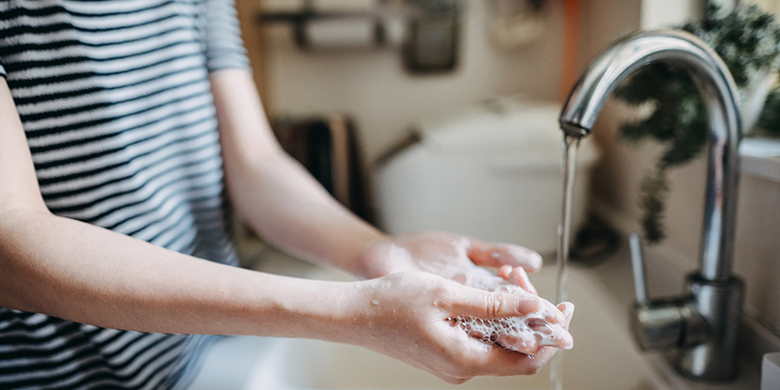Handwashing awareness: clean facts you should know
- Category: Healthy Living
- Posted On:

Like every other place, we have germs down here in the Big Easy. Good hand hygiene keeps the germs where they belong—outside of your body. This National Handwashing Awareness Week (December 5–11), scrub up on your handwashing know-how for cleaner hands and better health.
Why you should wash your hands
Handwashing awareness isn’t limited to one week. After all, germs are everywhere you go, year-round. They’re on door handles, tabletops, steering wheels, computer keyboards and every other surface you touch.
These germs don’t pose a threat until you start touching stuff. Soon as you do, those germs stick to your hands like peanut butter.
Touch your eyes, nose or mouth, and those germs two-step into your body. There, they put your immune system to the test. If your immune system has a weak spot, you wind up sick and miserable. This is bad news for anyone, including pregnant women during flu season.
Germs that enter your body this way can cause all sorts of problems, including:
- Common cold
- Diarrhea
- Flu
By washing your hands with soap and water, you wipe away those threats if you do it right at the right time.
Handwashing awareness tip: when to wash up
Even if you never touch your eyes, nose and mouth, your hands need cleaning up. Otherwise, you’ll spread germs to the door handles and other surfaces you touch. You’ll also get it on any food you prepare.
With constant handwashing awareness, you wash your hands at the right times and prevent the spread of viruses, bacteria and germs.
Those right times include before and after the following:
- Caring for someone who has diarrhea or is vomiting
- Eating food, whether a full meal or a snack
- Preparing food (it’s important to wash while handling food as well)
- Treating a cut or wound
It would also help if you scrubbed your hands after the following:
- Blowing your nose or sneezing
- Changing a diaper
- Coughing
- Handling animal feed or waste
- Helping a child clean up after using the restroom
- Petting an animal
- Touching garbage
Handwashing awareness tip: wash them right
You’ve got to use the proper technique to make the most of all that handwashing awareness.
- Step 1. Wet your hands with clean running water. Don’t apply soap before wetting your hands.
- Step 2. Apply soap to your hands. Use a good old-fashioned bar of soap or liquid soap, not hand sanitizer. Once it’s on your hands, lather for 20 seconds. (Sing or think the words to “Happy Birthday” twice to time your lather.)
- Step 3. Scrub your hands. Your palms do most of the touching, but don’t stop cleaning there. Wash the top of your hands, between your fingers and under your nails.
- Step 4. Rinse off with running water. If there is no running water, be sure the water you rinse your hands with is clean.
- Step 5. Dry your hands with a clean towel or a paper towel. To avoid picking up new germs, use the towel to turn off the water and open the bathroom door.
Beyond handwashing awareness
Helpful as clean hands are, handwashing awareness isn’t always enough to keep you well. To sidestep illness and help others do the same, remember these tips all year round:
- If you’re sick, stay home.
- Keep your distance from other sick people.
- Maintain a healthy lifestyle by taking care of yourself. Reduce stress, eat healthily, drink plenty of water, exercise regularly and get enough sleep.
- Use a tissue to cover your mouth and nose when sneezing or coughing.